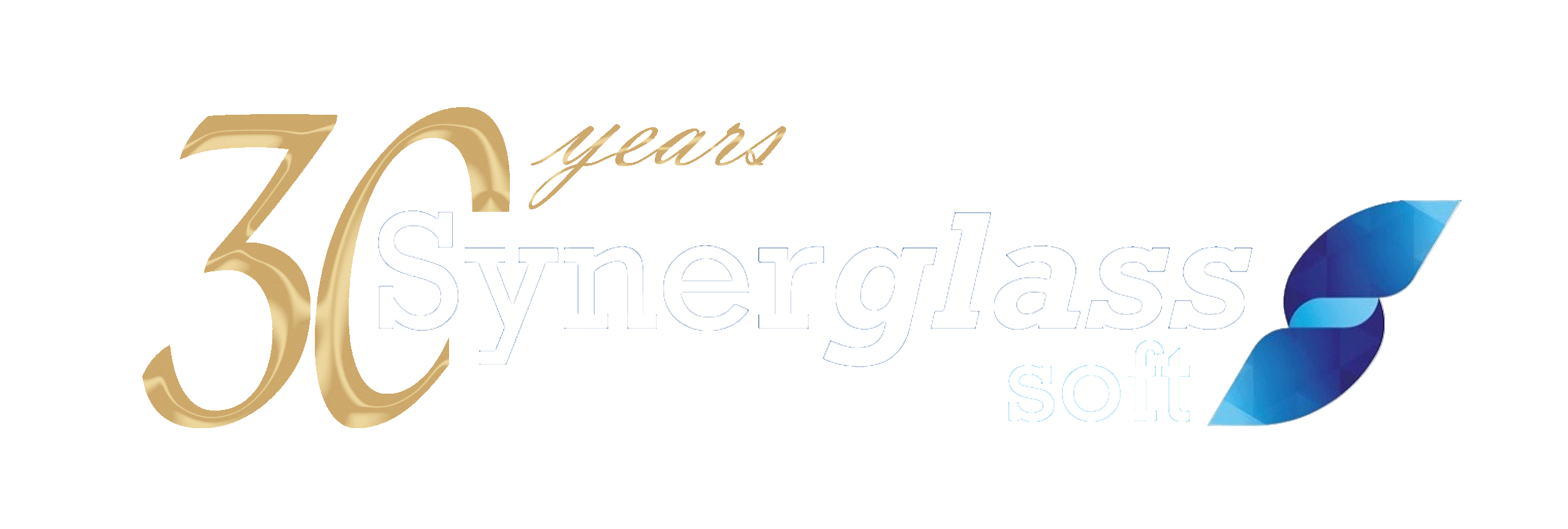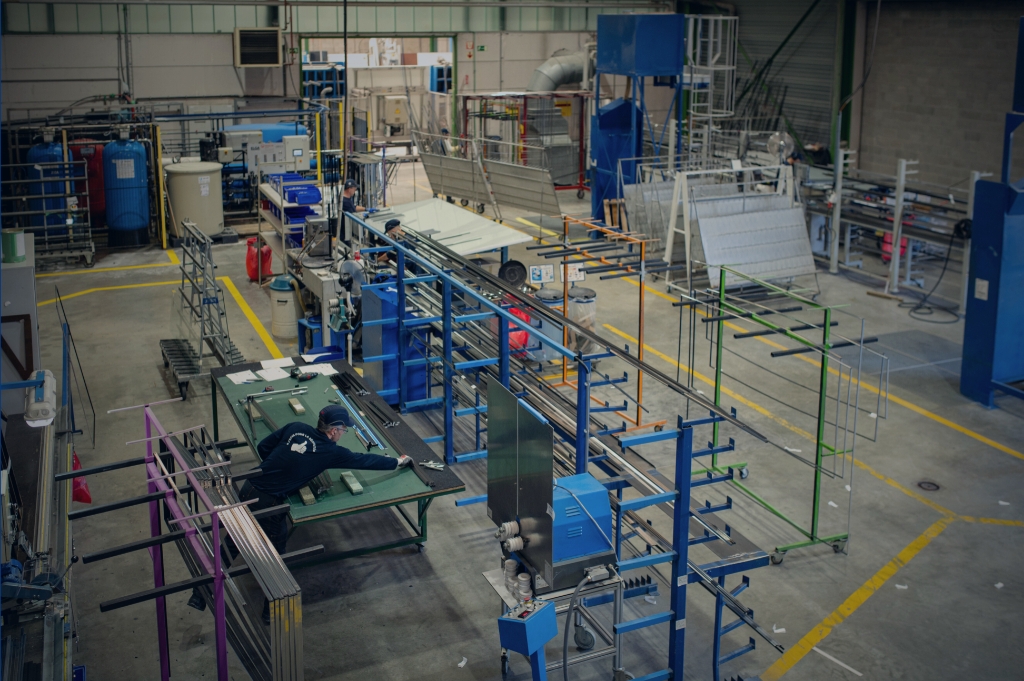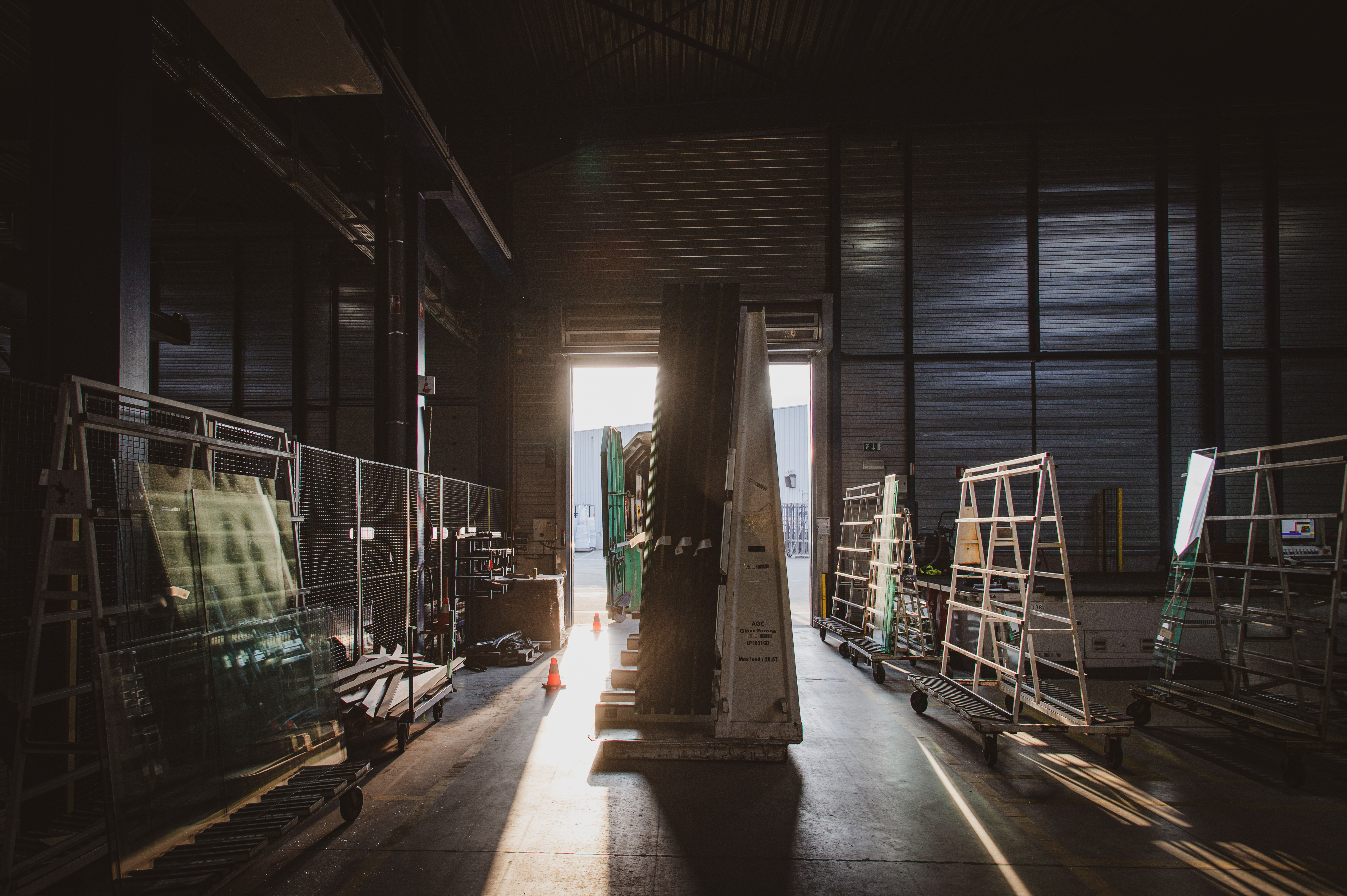For glass processing companies, software plays a crucial role in managing operations – from order processing to production planning and logistics. Many glass processing companies currently use monolithic ERP systems. While these systems can offer stability and simplicity, especially for smaller operations, they may become rigid and harder to maintain as business needs evolve.
In contrast, a modular software architecture offers flexibility by allowing businesses to customize, update, and scale their systems without affecting the entire platform. At Synerglass-Soft, we’ve spent over 30 years working with glass processors and understand how software architecture choices impact day-to-day operations. We’ve helped businesses navigate both monolithic and modular ERP systems – and the transition between the two.
In this article, we’ll break down the differences between monolithic and modular architectures, highlight their pros and cons, and help you determine which ERP structure best suits your business. By the end, you’ll understand the key differences between monolithic and modular ERP architectures – so you can decide which one aligns best with your company’s size, goals, and long-term needs.
But before we compare monolithic and modular ERP, let’s take a step back and understand why software architecture plays a crucial role in your glass processing operations.
Understanding software architecture approaches
Before diving into the specifics of monolithic and modular software architectures, it’s essential to understand why software architecture matters. The way an application is structured impacts its scalability, maintainability, performance, and adaptability to change.
For decades, monolithic architecture has been the default choice for software development, providing a unified system where all components are tightly integrated. However, as businesses require more agility, flexibility, and scalability, modular approaches have gained traction.
To better evaluate both architectures, let’s first explore how each one is structured and what defines its key characteristics.
Monolithic software architecture: a unified approach
Monolithic software architecture is a traditional approach where all components of an application – user interface, business logic, and database interactions – are tightly integrated into a single codebase. This means that every function of the software operates within the same environment, sharing resources and dependencies.
Key characteristics of monolithic architecture
- Single codebase: The entire application is developed, deployed, and maintained as a single unit.
- Shared memory & resources: Components communicate internally without requiring APIs or network calls.
- Tightly coupled components: Any modification in one part of the system can impact other parts, requiring thorough testing.
- Centralized deployment: Updates and patches involve deploying the entire application, often leading to downtime.
- Simplified development & debugging: Since everything is contained within one system, developers can more easily navigate and debug the application.
A monolithic ERP might be suitable if:
- You operate a small business with straightforward processes.
- You need an all-in-one system with minimal customization.
- Your IT team has limited resources to manage modular integrations.
Monolithic architecture is well-suited for smaller applications or systems with limited complexity, where maintaining a single, unified system offers simplicity and efficiency. However, as applications grow, scaling and maintaining a monolithic system can become challenging due to its tightly coupled structure.
This is where modular ERP provides a more flexible alternative, allowing businesses to customize and update their systems more efficiently.
Modular software architecture: a flexible, scalable approach
Modular software architecture, often built on microservices, structures the ERP into independent modules that communicate through APIs. It breaks down an application into independent or semi-independent components (modules). Each module – such as order management, production planning, or optimization – operates autonomously, allowing you to scale and update functionalities without disrupting the entire system.
Key characteristics of modular architecture
- Decoupled components: Each module operates independently, meaning updates or modifications can be made without affecting the entire system.
- Inter-module communication: Modules communicate through APIs, enabling seamless interaction while maintaining independence.
- Scalability & flexibility: Modules can be updated, replaced, or scaled individually based on needs.
- Parallel development: Different teams can work on different modules simultaneously, improving development efficiency.
- Technology agnostic: Modules can be written in different programming languages or frameworks as long as they adhere to communication protocols.
A modular ERP is ideal if:
- You need scalability and flexibility to adapt to evolving business needs.
- You want continuous updates without major disruptions.
- You require APIs for automation and third-party integrations.
Modular architecture like Symbiose is particularly advantageous for large, evolving software systems that require agility, scalability, and maintainability. By structuring applications in modules, organizations can adopt a more iterative and flexible development approach.
Want to see how modular software can benefit your business operations? Check out our article on the Top 5 Benefits of Using Modular ERP Systems for Glass Processors to dive deeper into how modular architecture can transform your business operations.
Choosing the right architecture for your glass processing business
The decision between monolithic and modular ERP solutions depends on factors such as company size, technical expertise, and long-term goals. Here’s a quick comparison to guide your decision:
| Criteria | Monolithic architecture | Modular architecture |
|---|---|---|
| Development speed | Faster for small projects | More efficient for long-term scalability |
| Maintenance | Can become complex over time | Easier due to isolated modules |
| Scalability | Limited and costly | Scales efficiently with business needs |
| Customization | Difficult without impacting other features | Easier, as new features can be added independently |
| Deployment | Requires full system updates | Allows for independent feature releases |
Because of its benefits, many glass processors are now moving toward modular ERP solutions. Let’s explore the main reasons behind this shift.
Why glass processors are moving to modular ERP systems
For years, glass processing companies have relied on monolithic ERP systems to manage their operations. However, these systems can come with major drawbacks: long development cycles, limited flexibility, and a high risk of disruption when updates are deployed. Many businesses have faced “big bang” updates that cause costly interruptions multiple times a year.
As the glass industry evolves, companies require agility, scalability, and continuous improvement to stay competitive. That’s where modular ERP enters the conversation.
Built on microservices, modern modular architectures allow manufacturers to:
- Deploy updates seamlessly, without waiting for full-system upgrades – minimizing disruptions and improving overall efficiency
- Customize features as needed, activating or deactivating modules on demand
- Integrate third-party tools easily, enabling more automation and interoperability
That’s why modular ERP is increasingly the choice for manufacturers who want to stay agile while reducing IT friction.
What if you’re considering the switch?
If you’re considering moving from a monolithic to a modular ERP system, you might be wondering how complex that process really is.
The reality? It’s more manageable than you think – especially when approached in phases. Many glass processors start small by rolling out a single module, then gradually expand based on operational needs.
With the right planning and support, it’s possible to transition without major disruptions to your day-to-day production.
Is a modular ERP right for your glass processing business?
Both monolithic and modular architectures have their place. If you value simplicity and stability, monolithic might work. If you need scalability and agility, modular is the future.
The glass industry is evolving – automation, seamless updates, and flexibility are becoming business-critical. If your current ERP feels like a bottleneck, it might be time to consider modular software.
At Synerglass-Soft, we help glass processors transition smoothly from rigid ERP systems to flexible, modular solutions like Symbiose, ensuring they stay ahead in an evolving industry.
Considering an upgrade? Book a demo to explore how modular software can future-proof your glass processing business.




